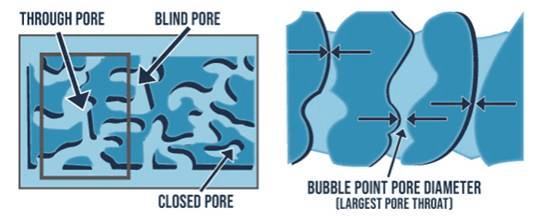Particle Testing Authority (PTA), a division of Micromeritics Instrument Corporation, has stepped up its Pore Analysis Capabilities. The Company today announced those efforts include capillary flow porometery (CFP) and liquid-liquid displacement porometry (LLDP).
Using CFP, pore properties are calculated by measuring the the fluid flow when an inert, pressurized gas is applied to displace an inert and nontoxic wetting fluid impregnated in the porous network of the samples with pore sizes of 500 to 0.015 microns. Parameters such as first bubble point (corresponding to the largest pores present) can be calculated with accuracy and repeatability according to ASTM F-316.
LLDP can measure nanopores (1,000 to 2 nm) at low pressures by displacing the wetting liquid with an immiscible liquid at increasing pressure. This eliminates error from collapse or mechanical damage caused by high pressure when measuring materials such as hollow fibers.

With these methods, PTA can analyze materials such as textiles (woven and nonwoven), paper, polymers, metals, ceramics, and porous rocks to understand how high a throughput can be achieved, for example.
We currently measure porosity and pore size using gas adsorption techniques and mercury porosimetry, so capillary flow porometry and liquid-liquid displacement porometry allow us to help more customers address their material characterization questions and problems. We have performed various analyses for our customers in the energy storage industry, and CFP has allowed us to provide a more comprehensive characterization for battery separators
Greg Thiele, General Manager, PTA
For more information go to https://www.particletesting.com/pr-porometer.